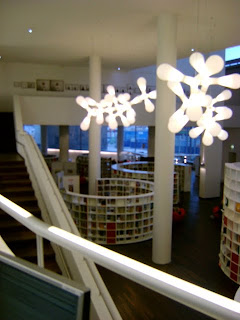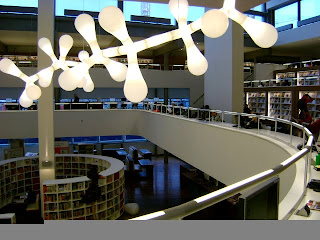 Yesterday I saw Dr. Michael Goddard - one of the organisers of the Bigger Than Words, Wider Than Pictures conference. We actually met to discuss the PhD proposal I'm putting together with his help but we also chatted briefly about the upcoming event. There's some great stuff planned. We touched on my contribution and Michael suggested that I might be interested in reading a recent book by Steve Goodman titled Sonic Warfare: Sound, Affect, and the Ecology of Fear.
Yesterday I saw Dr. Michael Goddard - one of the organisers of the Bigger Than Words, Wider Than Pictures conference. We actually met to discuss the PhD proposal I'm putting together with his help but we also chatted briefly about the upcoming event. There's some great stuff planned. We touched on my contribution and Michael suggested that I might be interested in reading a recent book by Steve Goodman titled Sonic Warfare: Sound, Affect, and the Ecology of Fear.So I Googled it when I got home and realised that Steve Goodman is the same Steve Goodman that I actually know through his work with the Hyperdub label. There he's more noticeable as Kode 9 and, as label boss, is responsible for releasing groundbreaking music by the likes of Burial, Zomby, Flying Lotus, Martyn, Samiyam, Joker and more. In fact I interviewed him back in 2008 for something else.
What I didn't realise then is that the guy who has also pushed innovative electronic sounds via fanzines and club nights also has a very impressive academic career. With a PhD in philosophy he has apparently studied rave culture, cybernetics and postmodernism and now this book journeys through “philosophy, science, fiction, aesthetics, and popular culture, as he maps a (dis)continuum of vibrational force, encompassing police and military research into acoustic means of crowd control, the corporate deployment of sonic branding, and the intense sonic encounters of sound art and music culture”. A read then perhaps as heavy as one of his DJ sets.
Anyway, I've now got it on order from Amazon.
Available via the following link: Sonic Warfare: Sound, Affect, and the Ecology of Fear (Technologies of Lived Abstraction Series)


















































